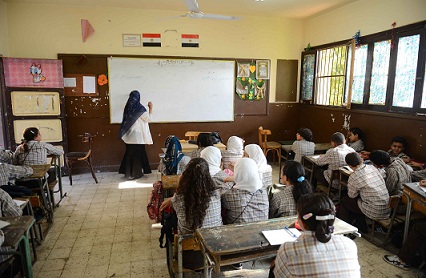By definition, a rare disease affects a very small number of people—an estimated 1 in 2,000, according to the broadest definitions.¹ Approximately 80% of these conditions are believed to be caused by genetic mutations,² with half of all diagnosed patients being children,² and 30% of pediatric patients not surviving past their fifth birthday.³
Globally, an estimated 400 million people are affected by rare diseases.² This staggering number highlights the urgent need for the healthcare sector to address the critical challenges these patients face—from reducing the time to accurate diagnosis to improving access to innovative solutions that can alleviate suffering and enhance quality of life.
AstraZeneca plays a transformative role in the rare disease space, with a solid track record of delivering innovative treatments for seven different rare diseases. The company also collaborates with scientific, medical, and public policy communities to help shape healthcare systems that are more responsive to the unique and urgent needs of rare disease patients.
In this context, Daily News Egypt interviewed Dr. Sorraya Bekkali, Senior Vice President, Europe, Canada and International, Rare Disease Division at AstraZeneca, during her recent visit to Cairo, to explore the latest developments in the rare disease landscape.
AstraZeneca stands as a global leader in the pharmaceutical industry. What are the company’s most impactful international initiatives in rare diseases driving its success?
AstraZeneca is accelerating the development of rare disease treatments and expanding our global reach. We currently serve patients in 70 countries and aim to reach 100 countries by 2030.
We are deeply committed to supporting health policies that enhance care for rare disease patients. This includes collaborating with governments and global health organizations to ensure that patient needs remain central to healthcare strategies.
We also back policies that improve awareness and readiness within the medical community, reduce the time it takes for patients to receive an accurate diagnosis, and create dedicated regulatory pathways for innovative rare disease solutions—ensuring equitable access to care, particularly in cases where no treatment alternatives exist.
Importantly, we are not alone in this effort. In May, the 78th World Health Assembly (WHA) adopted a resolution on rare diseases—co-sponsored by Egypt and Spain—marking a historic commitment by the international community to improve care for patients with rare diseases, with a focus on tangible, action-oriented plans tailored to their unique needs.
What are the key challenges and opportunities in the rare disease ecosystem in Egypt?
Rare diseases pose a significant global challenge. There are an estimated 10,000 distinct rare diseases, but 95% of them have no approved treatments.² Patients often face delays in diagnosis, partly due to limited public awareness. Alarmingly, around 40% of patients receive at least one misdiagnosis.⁴
However, Egypt is making promising progress. Several initiatives are now underway to raise awareness among physicians and the broader community, which is improving diagnosis rates. Additionally, efforts are being made to streamline and expedite the drug registration process, helping to ensure more timely access to innovative treatments.
We are also seeing increased investment in rare disease research in Egypt, opening new doors for innovation. At AstraZeneca, we believe that improving the lives of rare disease patients requires a comprehensive, integrated strategy—one that we’re actively working toward in collaboration with local and global partners.
How does AstraZeneca’s presence in Egypt contribute to improving the healthcare infrastructure, particularly for rare diseases? What are the key initiatives supporting this goal?
AstraZeneca Egypt supports every stakeholder in the rare disease ecosystem, with a strong focus on improving symptom recognition, expediting diagnosis, and delivering innovative treatments that meet urgent medical needs.
Two years ago, we launched a dedicated Rare Disease Unit in Egypt. Since then, we’ve introduced new solutions for seven different rare diseases. In addition, we’re forging strategic partnerships with key healthcare stakeholders to establish a unified and sustainable framework that strengthens rare disease care throughout the country.
4. How will the letter of intent signed during Abu Dhabi Global Health Week enhance diagnostic capabilities in Egypt’s healthcare sector, particularly for rare disease patients?
The letter of intent signed between AstraZeneca Egypt and the Egyptian Ministry of Health and Population is a landmark step. It aims to localize advanced molecular genetic testing for rare diseases, which will significantly improve access to cutting-edge diagnostics for individuals suspected of having rare genetic conditions.⁵
This initiative will enable earlier and more accurate diagnoses, ultimately improving patient outcomes and strengthening the country’s healthcare infrastructure.⁶ By harnessing genetic data, we can overcome the limitations of conventional diagnostic methods and accelerate diagnosis across a broad range of conditions.⁶
It will also reduce costs associated with sending samples abroad and bolster the diagnostic capabilities of local healthcare providers.⁶ In parallel, it will strengthen Egypt’s research and development ecosystem, paving the way for the creation of new diagnostic tools and healthcare innovations.⁶
This collaboration represents a critical milestone in the broader effort to improve diagnostic accuracy and ensure equitable access to rare disease care. It supports Egypt’s Vision 2030 by breaking down barriers to high-quality healthcare and advancing sustainable, patient-centered innovation.
ONA3690-19052025
REFERENCES:




